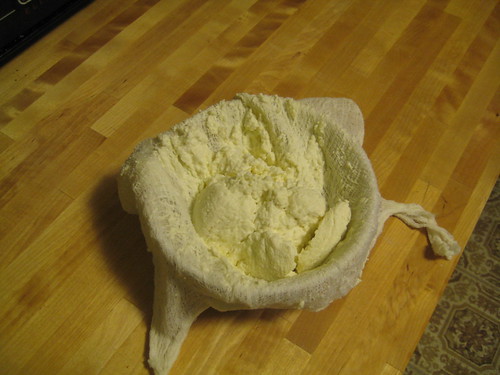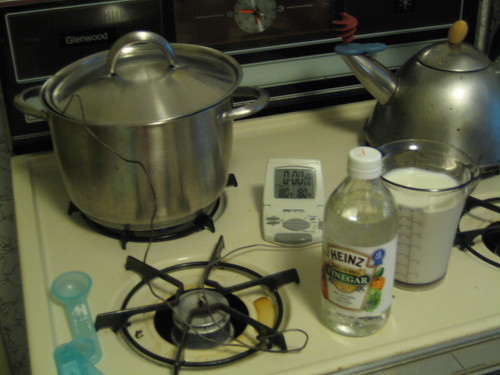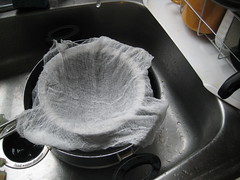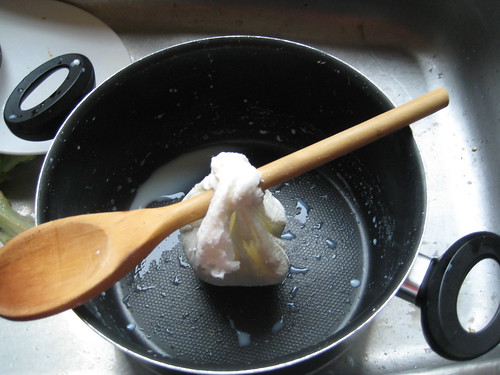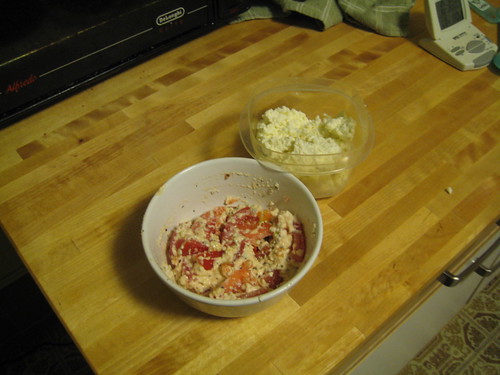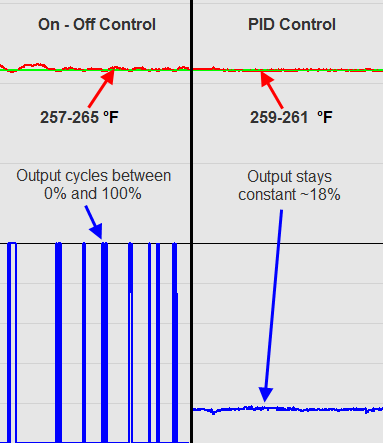That’s right. Cheese. I was surprised by how easy it was. It was just a simple farmer’s cheese, but still. Making cheese is one of those things you just assume is impossible; for professionals only. Turns out people have been making it for a long time, with tools far cruder than what we have today. Who knew?
This could probably be an Instructable, but I’m not an expert, and I’d hate to inadvertently lead someone astray. This is what worked for me, your results may vary.
So let’s get down to it. I used this recipe / procedure. Other than grossly over-specifying the amount of salt needed, it was easy to follow and gave good results.
Step 1: Heat the Milk
The recipe says something like “Slowly heat” until “about 180,” stirring “often.” I approached these statements with the meticulousness of an engineer doing something for the first time. First of all… ABOUT 180? No way. Digital thermometer. As far as slowly, I put the stove on low, and got a heat rate of 5-10 degrees/min. I rounded out the overkill trio by deciding to stir every 20 degrees. I’ve since made cheese again, have been more lax, and it still came out fine. (I still use the thermometer though.)
Step 2: Curdle the Milk
Once the milk was at temperature, buttermilk and vinegar were added. Lowering the pH of the system causes the solids in the milk to want to separate. I think. This will happen at any temperature, but it’s amazing how quickly it starts when you’re at 180 degrees.
Step 3: Strain
After about 10 minutes, it’s assumed that all the solids that are going to curdle have curdled. Time to get them out of there! Using cheese cloth and a strainer (for support,) I was able to keep the curds and dump the whey. Yes. Curds and whey. This is where that comes from. Why Miss Muffet would want to eat whey is beyond me. The curds are tasty though.
Step 4: ENJOY
The last step is to salt to taste. I used 1/4 tsp. That’s it. Serve in the recipe of your choice. In the picture above it’s mixed with tomato, olive oil and basil. Delicious. It also works really well in mashed potatoes. The cheese apparently lasts for 5 days in the fridge, but it’s been gone after two days both the times that I’ve made it.Â
I can’t stress how easy this was. While it takes around 1:30 from start to finish, more than an hour of that is time where you can do something else. Totally worth it!Â
The next step for me is to make “real” cheese. That means renet, and aging. At least I think that’s what it means.
